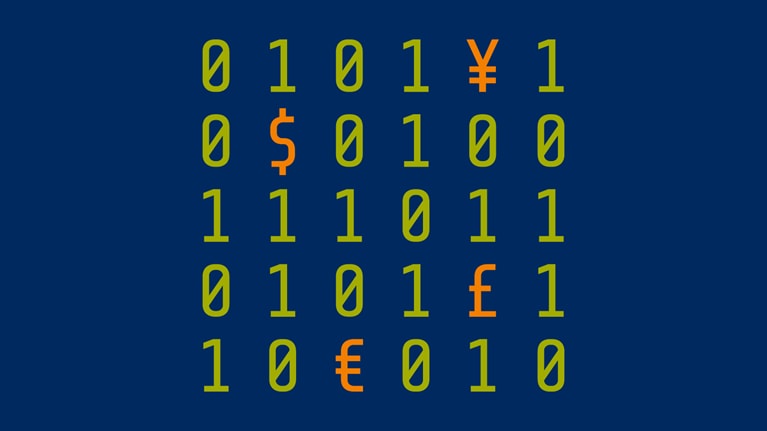Internet of Things (IoT) technologies have evolved rapidly in recent years and continue to change how we interact with our surroundings. For companies, IoT brings new ways to monitor and manage objects in the physical world, while massive new streams of data offer better avenues for decision making (often mediated by machines). The steady fall in prices of sensors and communications technologies, combined with a parallel rise in understanding of how they can be applied, have raised the strategic importance of IoT. As we have shown elsewhere, this can produce immense value in settings ranging from retail and healthcare to manufacturing and technology.
Despite the promise, we continue to see substantial differences in how well companies apply IoT in their businesses. Targeting IoT applications correctly and managing them effectively is far from easy, leaving many companies stuck and unable to move beyond pilots. To better understand what differentiates successful initiatives from struggling ones, we surveyed IoT executives at 300 companies—those that have moved beyond experiments and have scaled up IoT use in their businesses.1 We asked them about the practices that directly support their IoT strategy, as well as other factors that may influence it, and sorted leaders from laggards based on their self-reported economic impact from IoT.2 We found that while a number of IoT “habits” play a role in successes, three are particularly relevant for C-level executives who may be considering heavier investment in IoT or searching for reasons their programs have failed to gain traction.
Habit 1: Begin with what you already do, make, or sell
There’s no single path to IoT success. Some companies focus on connecting existing products to make them more attractive and useful to customers. Others exploit opportunities to achieve operational improvements that increase efficiency and lower costs. Still others push more boldly, using connectivity to create entirely new products or remake business models (even moving into separate IoT businesses). Our survey found that companies that achieved scale in IoT did so by pursuing a variety of strategies—and all with at least some degree of success. However, when we looked more closely at the gains, we found that the most successful companies often played to their strengths—rather than betting on unfamiliar markets or new products (Exhibit 1). These IoT leaders, the group getting the most economic benefit from IoT, were nearly three times more likely to add IoT connectivity to existing products they sell than the laggards were. Conversely, laggards—those in the bottom quintile of economic returns—were significantly more likely to focus on developing new IoT products or services.

Playing to market strengths was the course chosen by strategists at an agricultural-equipment manufacturer, after they observed digital players from outside the industry sizing up opportunities to offer sophisticated analytics services to farmers. In response, the company shifted R&D investments to “IoT-enabled” products and services in existing lines of business. Their new system used farm-based sensors to read soil conditions continuously, relaying the information to a cloud-based analytics platform that farmers could use to monitor variations on their mobile devices. Other sensors tracked irrigation levels and sent alerts whenever moisture readings hit predefined levels demanding attention. With these real-time insights, farmers were able to optimize their water and fertilizer use. That, in turn, increased yields over the growing season while substantially reducing water, fertilizer, and fuel costs for equipment. As the manufacturer added users, the growing quality and breadth of data improved the predictive capabilities of the system, further increasing value to farmers who joined the ecosystem.
Would you like to learn more about our Digital McKinsey Practice?
The success of the agriculture manufacturer underscores the advantages incumbents often have in their ability to define use cases for IoT that build upon existing product lines, as well as their better line of sight on how improvements can create value for customers.
Habit 2: Climb the learning curve with multiple use cases
Many companies become frustrated when they don’t see early signs of transformative impact from an IoT pilot. Our research points to one key reason: a single use case just won’t get you there. Scale, both in terms of number of use cases as well as the breadth of application, helps maximize impact. Leading companies in our survey implemented on average 80 percent more IoT applications than laggards. More widespread usage, it seems, forces a cultural shift. It stokes organizational energy behind changes and creates new mindfulness about the benefits of IoT. In a ripple effect, this momentum often exposes weakness in technology along with gaps in talent—both in terms of in-house IoT skill levels and the numbers of experts needed to implement IoT at scale. This “go big” approach may seem counterintuitive, particularly among executives who have fewer resources to deploy and feel more comfortable focusing on a small number of applications. While a smaller scale may be good for very early days, there is a clear learning curve that companies climb as they add use cases—and one that has a powerful impact. Our research shows that a greater number of use cases correlates with economic success (Exhibit 2), regardless of the use case or type of company.

Take the experience of one major transportation-equipment manufacturer whose initial IoT deployment, executives soon realized, just wasn’t bold enough. It had launched the IoT strategy with four minimum viable products (MVPs) but soon found that this narrow focus wasn’t improving performance as much as expected. A cadre of IoT leaders pushed against voices of caution and expanded the number of MVPs to 11. Executives also found that giving managers a larger number of IoT projects (and products) to oversee focused their attention, creating a bias toward action. That momentum built on itself as the company’s best talent wanted to be part of the innovative push. A broad base of 30 IoT scrum teams, meanwhile, helped loosen bureaucratic decision-making rules. Finally, unexpected efficiencies turned up as engineers were able to use similar data architectures for multiple offerings and found numerous synergies among the digital end products. The more aggressive use-case strategy produced in excess of $1 billion in new revenue.
Habit 3: Embrace opportunities for business-process changes
IoT is one of today’s most promising (and exciting) technologies. But people create the conditions for value creation. IoT has often been portrayed primarily as a technical-implementation challenge, with the drive for adoption spearheaded by specialists in the CIO function. Yet time and again we see that deriving real business gains from IoT efforts requires changes to a business process—the hard job of modifying the way a company does things. Connecting production equipment to the internet, for example, will allow a company to manage usage more effectively and predict when maintenance is needed. However, if the surrounding business processes aren’t modified and optimized, then value won’t be maximized.
Those second-order challenges were manifest at one metals manufacturer. The company had connected three rolling mills with sensors in an IoT deployment. The goal was to capture and analyze previously unused data from the machines. Executives were pleased that they were able to get the system up and running in just three weeks, to help solve nagging capacity constraints at the facility. However, there was a problem: the insights generated by the system weren’t being used by the frontline employees.

The Internet of Things: How to capture the value of IoT
The management team responded by modifying a range of plant-floor processes. For starters, they simplified the complex analytics that the system was churning out, synthesizing the output into one number that measured operator wait time. This change enabled line operators to recognize immediately when bottlenecks in the process were forming. The company then changed the inspection routes of plant-area supervisors, whereby they circled back to bottlenecked lines four times daily, checking in with the operators on how many times they had to wait—and why. Those discussions resulted in a change to daily plant-area “huddles” that included the operators, who were given greater latitude to adjust frontline processes to resolve underlying issues before they caused product flow backups. The IoT-informed process changes had a big effect. Operators were able to identify several hidden causes of slowdowns and stoppages, issues that earlier problem-solving efforts had missed. Overall equipment efficiency increased by 50 percent, saving hundreds of millions of dollars in planned capital expenditures.
This metals manufacturer learned that, in order to maximize IoT value, people have to behave differently, make decisions differently, and operate in a new normal of rapid information flow. It’s not surprising, then, that IoT leaders were three times more likely than IoT laggards to claim that having a strong ability to manage business-process change was a top-three IoT capability.
As we noted earlier, companies need to be attuned to other reasons why IoT deployment may fall short. For one thing, if the CEO and top team aren’t focused on potential IoT gains, providing visible encouragement (and adequate resources) for the efforts, they are likely to stall. Leaders need also to be mindful that IoT increases the potential for privacy breaches and data-security risks, since there are many more information nodes for hackers to penetrate. These risks need robust and continuous management, and those costs need to be incorporated into projected returns. Finally, even companies with a good IoT track record shouldn’t think they can go it alone. Technical IoT ecosystems are growing—and improving—by the day. Collaboration, often with smaller players that have high levels of expertise in areas such as software development, will provide a solid source of competitive advantage. That will help companies accelerate their programs and better position themselves to become IoT leaders.


